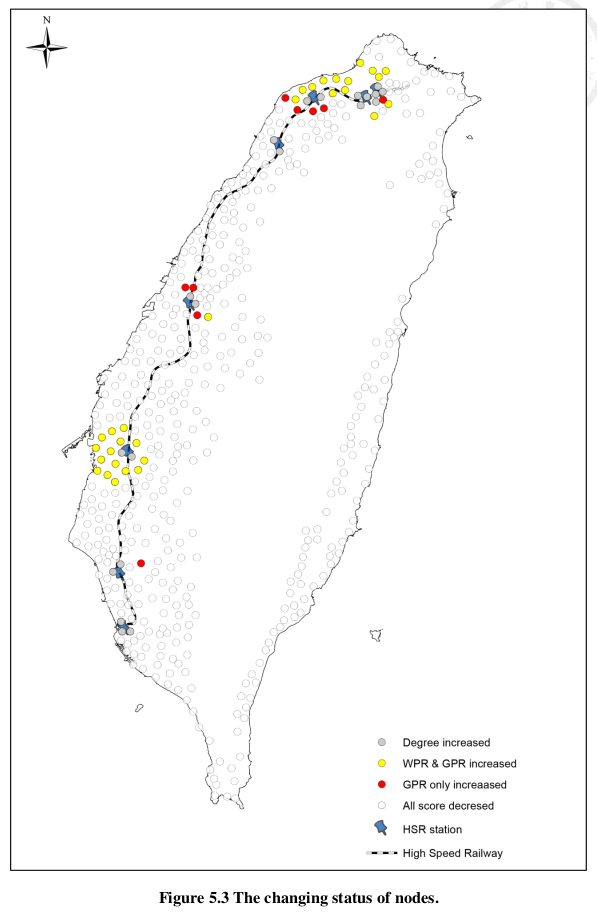
Paper
Chin, W. C. B. (2013) Geographically Modified PageRank Algorithms: Measuring the Importance of Nodes in a Geospatial Network. Department of Geography, National Taiwan University.
Abstract
A geospatial network represents the spatial relationships with the network perspective. Within the scope of social network analysis, the network topology characteristics, including network centrality, small world and scale-free properties, have been well studied, and these concepts can also provide important implications on measuring the important of places in the geospatial network. PageRank (PR), which is an important link analysis algorithm, is what Google uses to determine how important a page is on the web. However, most measures of network analysis were designed to understand network topological structures rather than geographical structures. Therefore, these measures have not considered the geographical relationships as their main concern, including geographical distance decay effect between nodes. This study incorporates geographic properties, including distance-decay and spatial interactions among nodes, and proposes two modified PR algorithms, Inverse-Distance PageRank (IDPR) and Geographical PageRank (GPR). To test the performance of the index of importance (including IDPR and GPR), this study did two experiments with the inter-city network of Taiwan. In the first experiment, this study calculated the index of importance, and this study used the population data and inter-townships car flow data as observed data to check the Spearman Rank Correlation, and compared the correlation results with existing algorithms: PR and Weighted PageRank (WPR); in the second experiment, this study explore the changes of node’s importance between before and after the construction of Taiwan High Speed Rail System. Our findings in the first experiment showed that IDPR and GPR are better correlated to the observed data, and our findings in the second experiment showed that the GPR and WPR could capture the transitive effect. Since IDPR and GPR take the distance decay effect into account, results using the algorithms can capture more geographical properties. In conclusion, IDPR and GPR are better metrics to be used in geospatial network analysis; but, if the transitive effect is an important feature in the analysis, GPR is a better metric.
Read article here:
- Official website: Geographically Modified PageRank Algorithms: Measuring the Importance of Nodes in a Geospatial Network, National Taiwan University Dissertation,
- Please contact me (by Gmail ).
